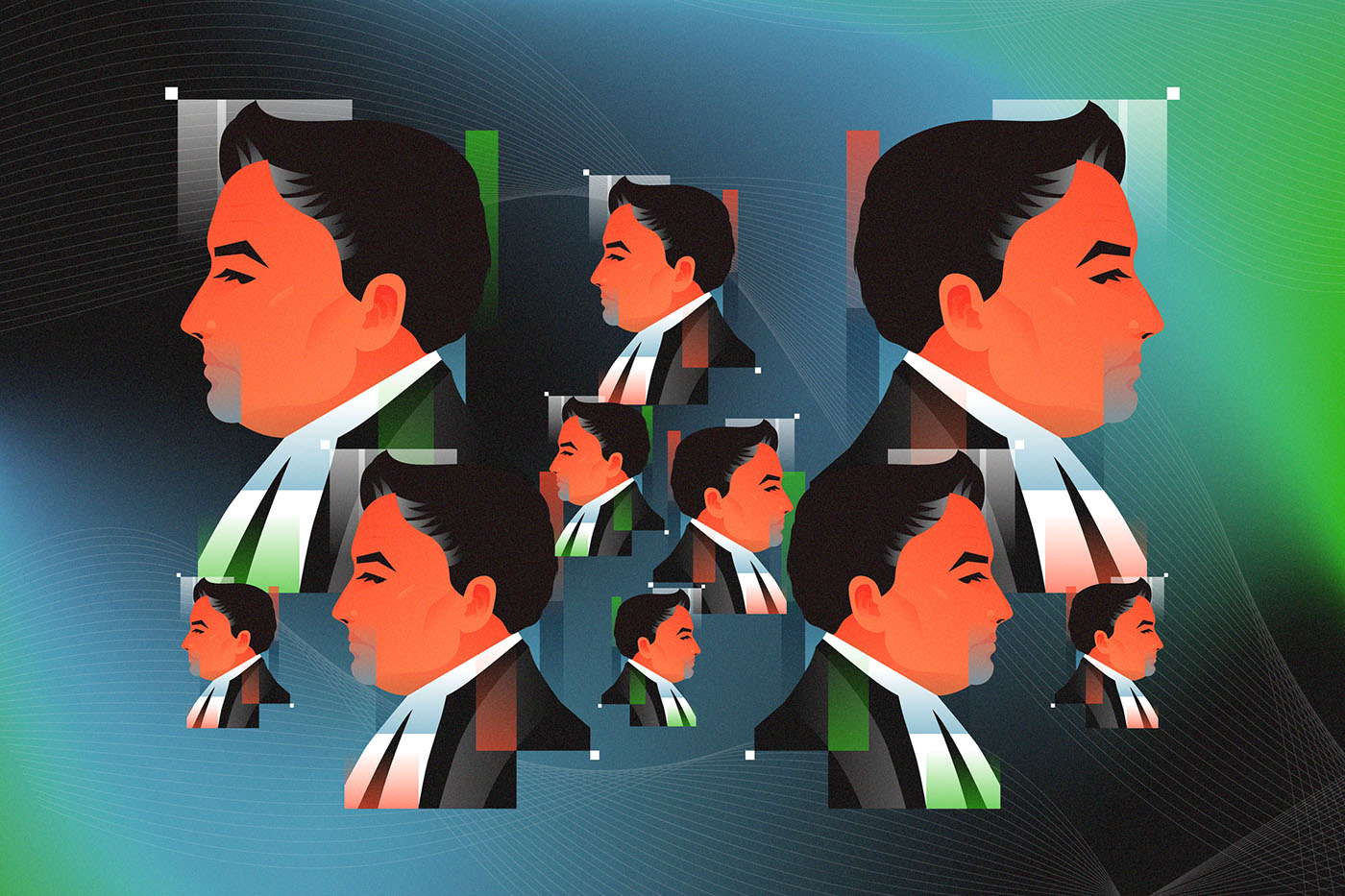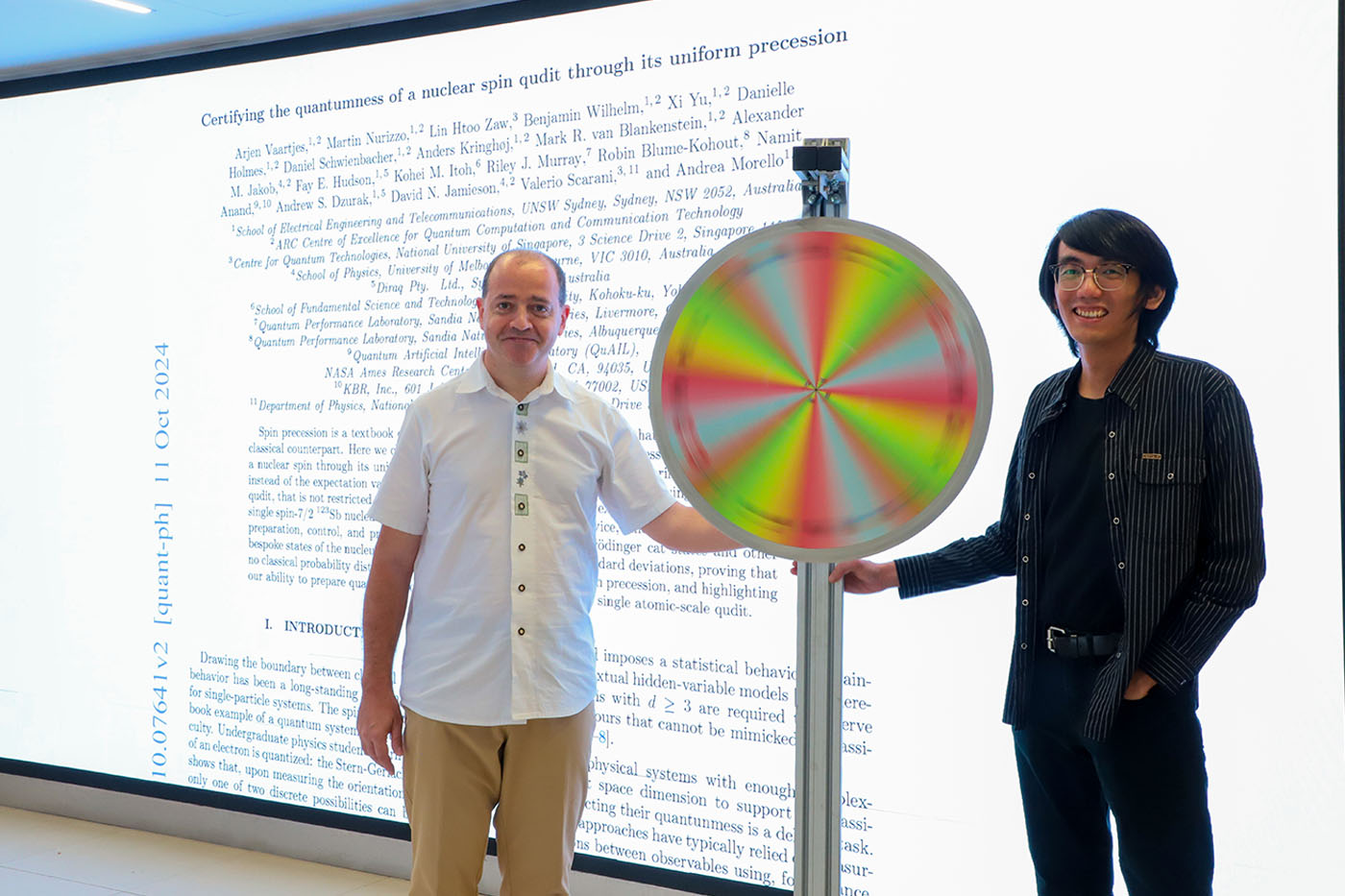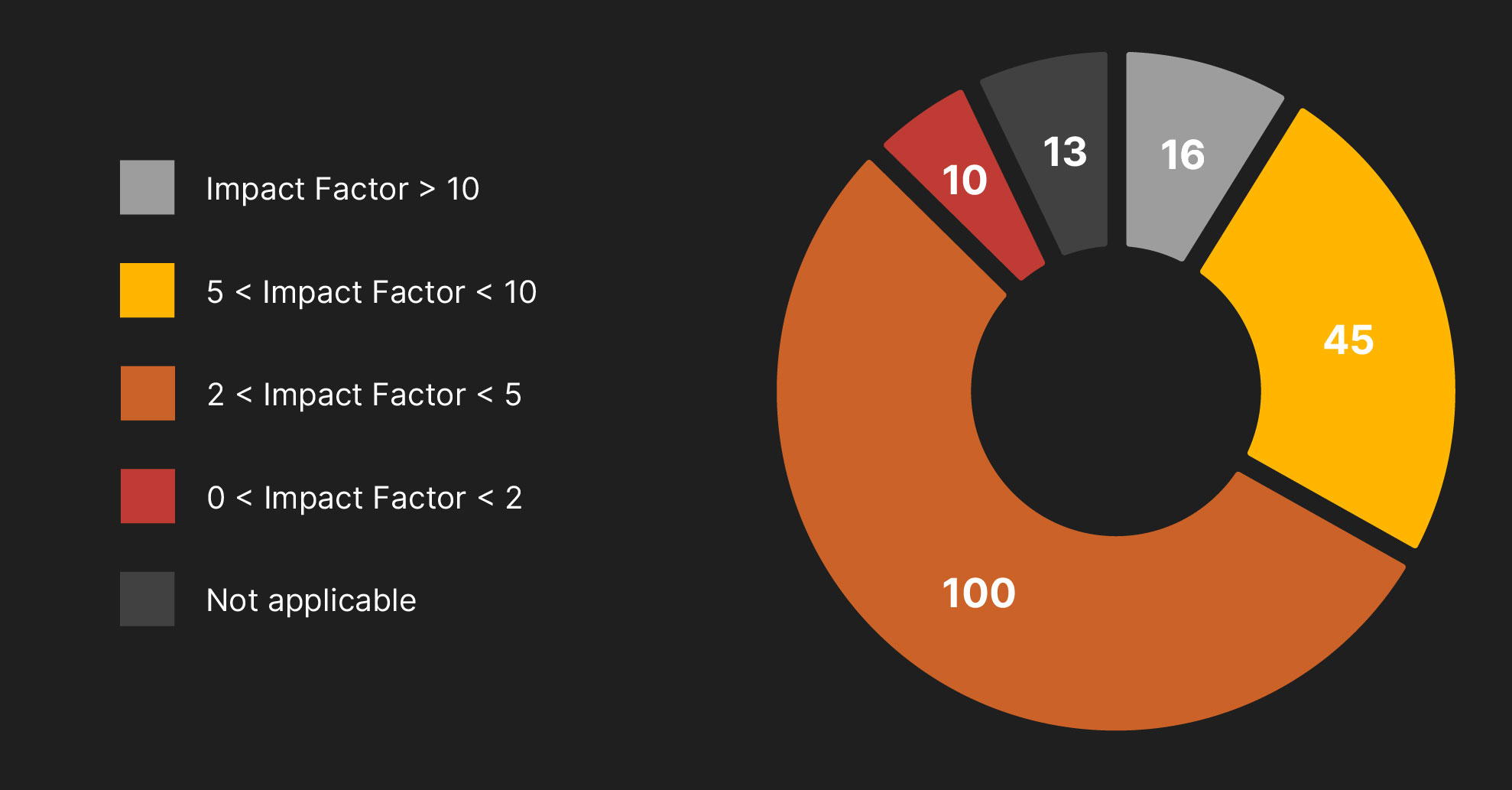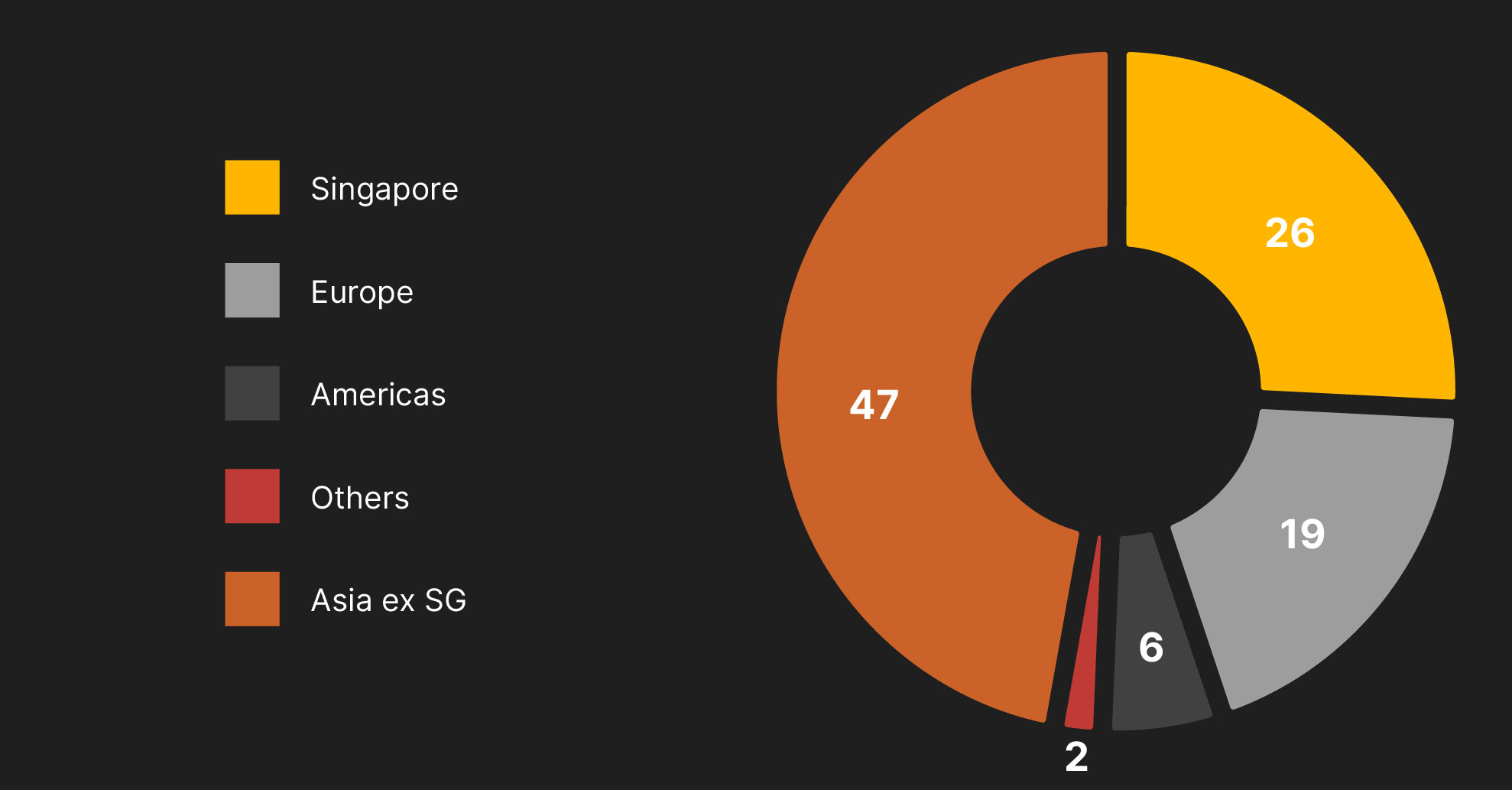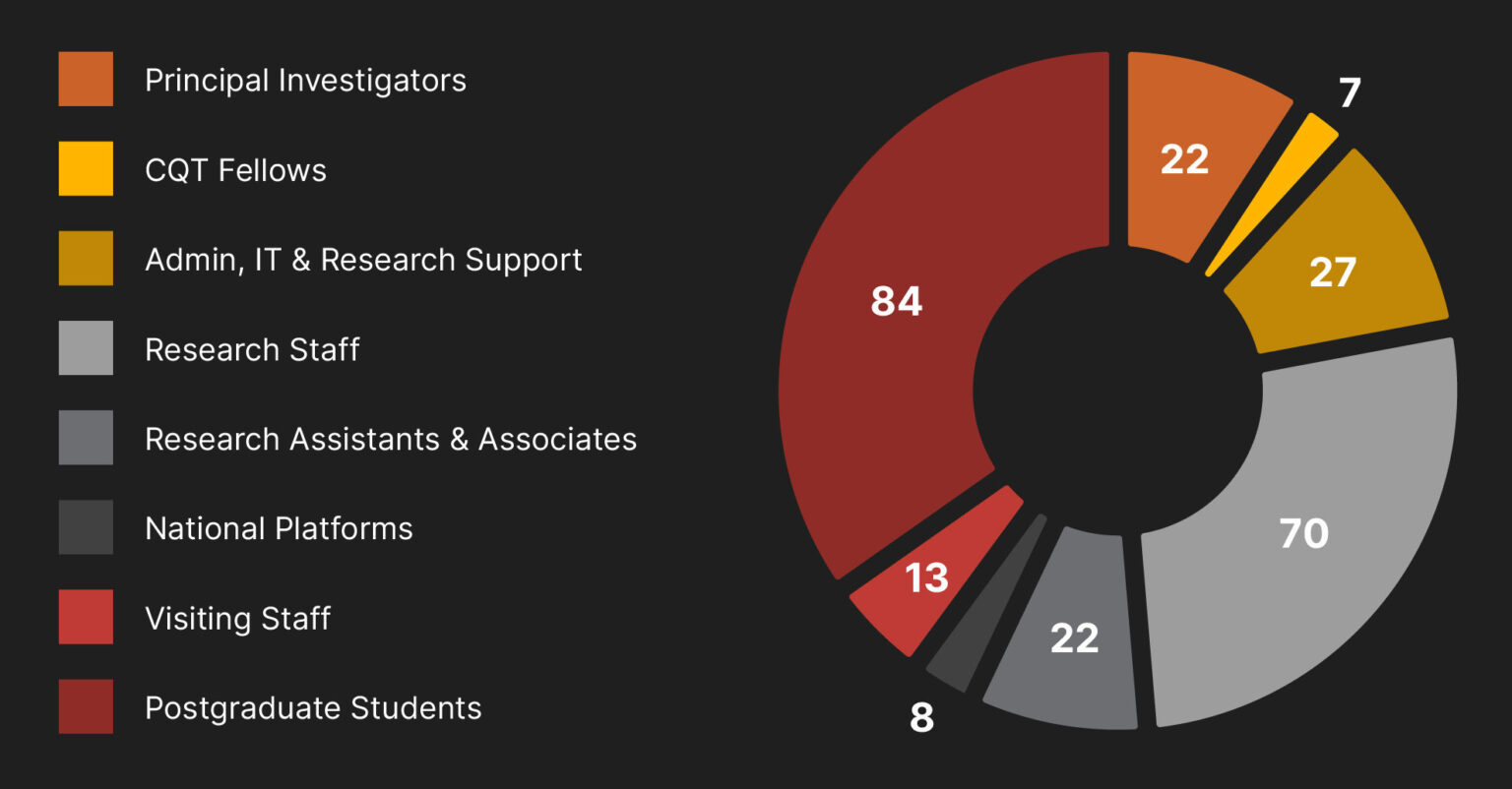CQT hosts Workshop on Macroscopic Superpositions of Levitated Systems
The event held 22-26 September put international experts in the same place, at the same time
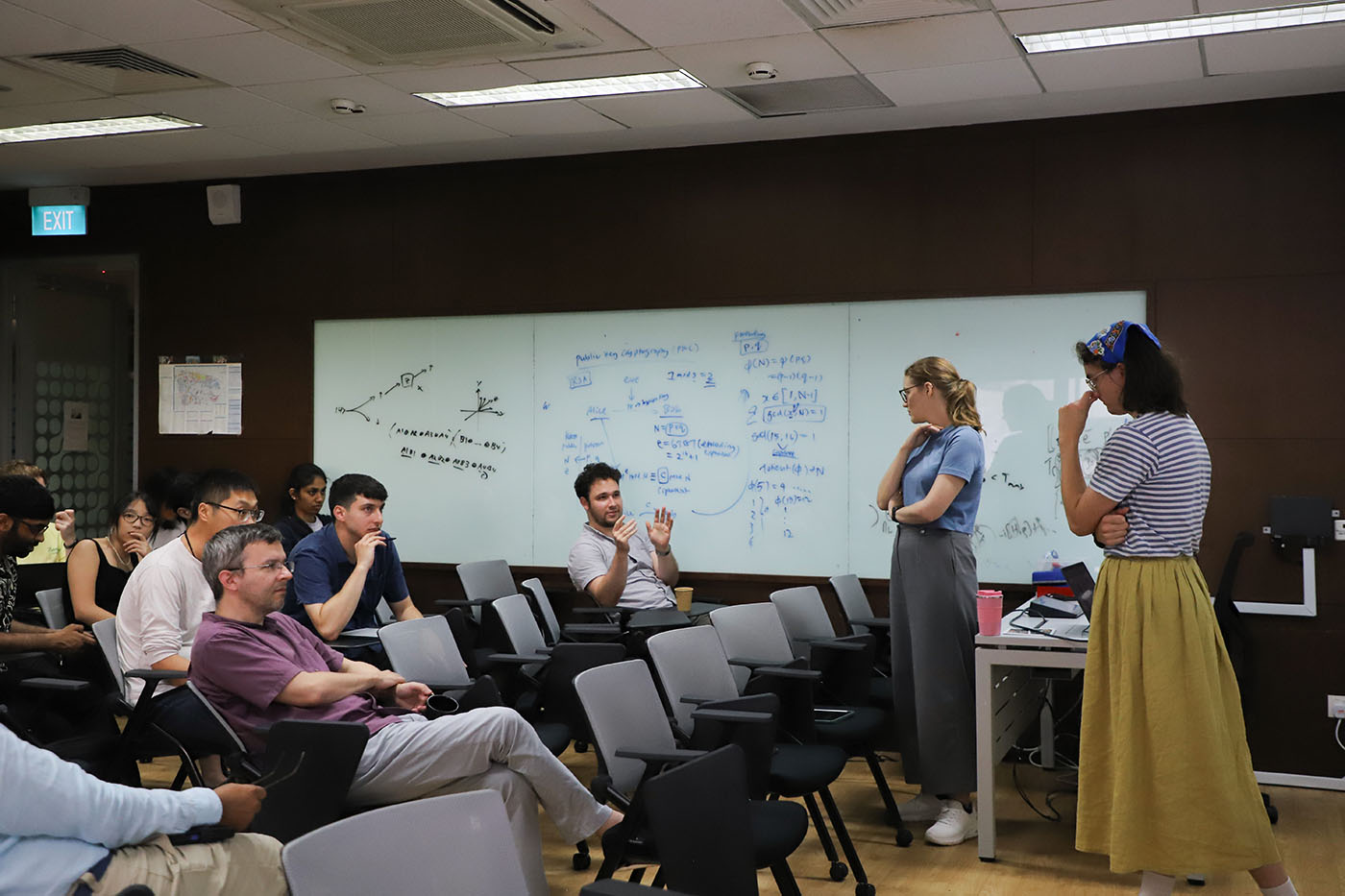
The workshop convened 15 invited speakers from 10 countries to discuss the latest research on macroscopic quantum superpositions..
Quantum physics is often described as the science of the small, but its phenomena can be conjured in big systems too. Researchers predict that objects as big as silica spheres, diamond crystals and sheets of graphite, each containing millions of atoms, can be prepared in quantum superposition states under the right conditions.
From 22-26 September 2025, early-career physicists gathered at the Centre for Quantum Technologies for a workshop focused on the techniques to create such macroscopic superpositions. The week’s talks also explored potential applications, from precision sensing to tests of fundamental physics.
The workshop was planned by CQT Deputy Director Valerio Scarani and Research Fellow Martine Schut, who joined CQT in early 2025 to develop this new line of research in Valerio’s group. They invited representatives from leading groups around the world to attend the workshop, hosting a total of 15 invited speakers from 10 countries.
“A nice variety of work was presented, with many interesting talks on experimental proposals and experiments that are being built. We look forward to seeing everyone’s future work on these projects! Hopefully the workshop has been inspirational and will result in some lasting collaborations,” says Martine.
Levitate to isolate
Since quantum states are fragile, losing features like superposition when they interact with their environment, macroscopic superpositions can exist only when the objects are well isolated. This typically involves cooling and often involves levitating the objects in some way, for example using lasers or electromagnetic interactions.
Martine, for example, presented a protocol she devised with Valerio to create a superposition involving an ion and a charged nanoparticle in a Paul trap, which uses oscillating electric fields to contain charged objects. The Paul trap would operate in a vacuum chamber where the ion and nanoparticle interact with as few environmental particles as possible. Their calculations, also shared on the physics preprint server arxiv (https://arxiv.org/abs/2509.17081), suggest the superposition could delocalise the particle over a few nanometers.
Other presenters included Denis Uitenborek from Leiden University in the Netherlands on his group’s approach to studying the combination of quantum and gravitational effects by measuring gravity between a tiny levitating magnet and a heavy block, and Daniel Kodroff from Lawrence Berkeley National Laboratory in the United States on using optically trapped particles to search for hypothetical particles that might account for the universe’s missing ‘dark matter’.
All speaker abstracts are available at the workshop website: superpositions2025.cqt.sg.
Research plans
The workshop was structured with three days of talks followed by two days for in-depth discussions. One afternoon of talks was held jointly with the Institute of Physics Singapore annual meeting, which was happening in the same week.
The workshop was deliberately kept small to build connections between young scientists and promote open exchange of ideas. Valerio said the atmosphere of the workshop reminded him of when he first started working in quantum information, when the community was small and and everyone was experimenting with new ideas.
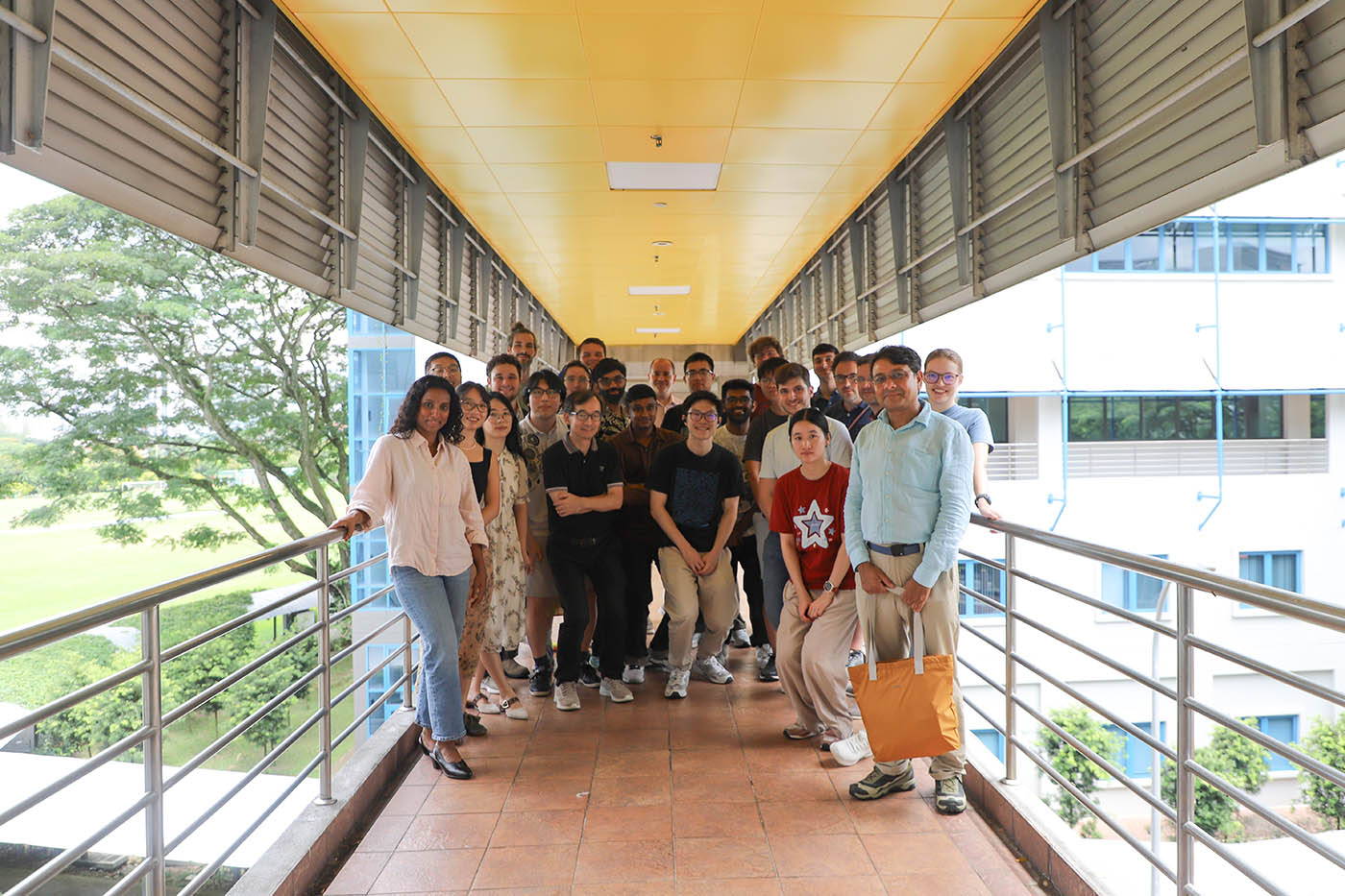
Related Stories
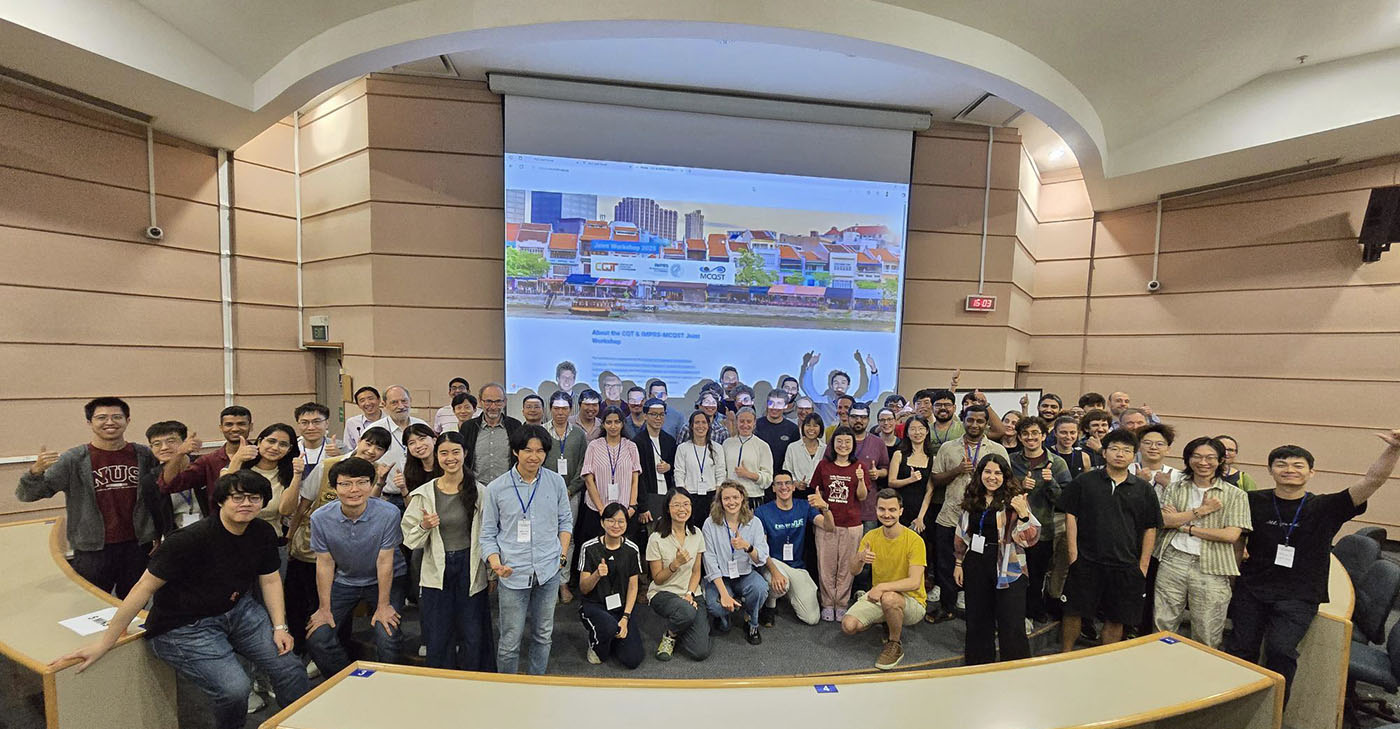
20 May 2025
Joint workshop held for Singapore and Munich quantum researchers
The four-day workshop planned by postdocs and PhD students attracted over 150 participants
